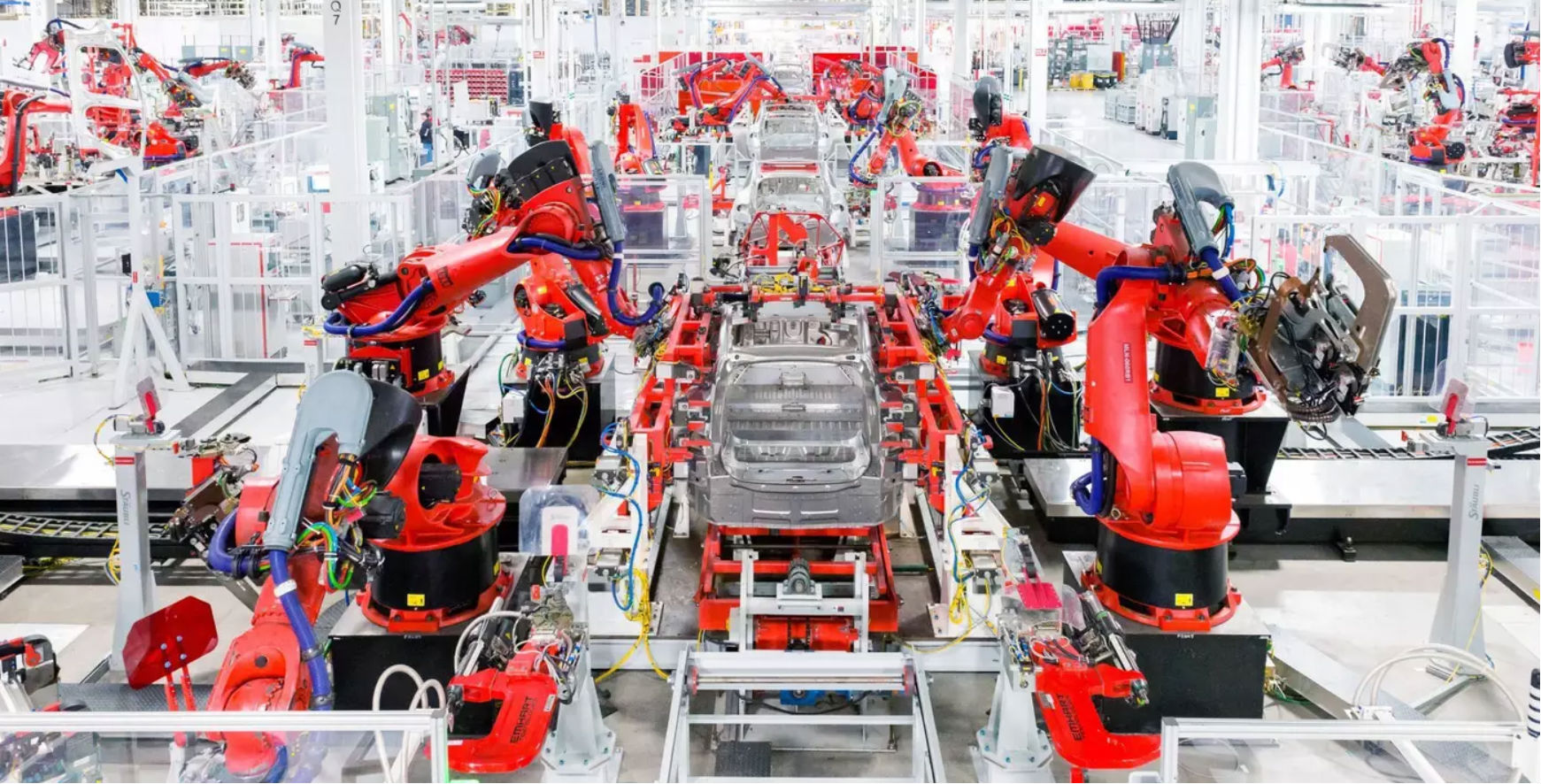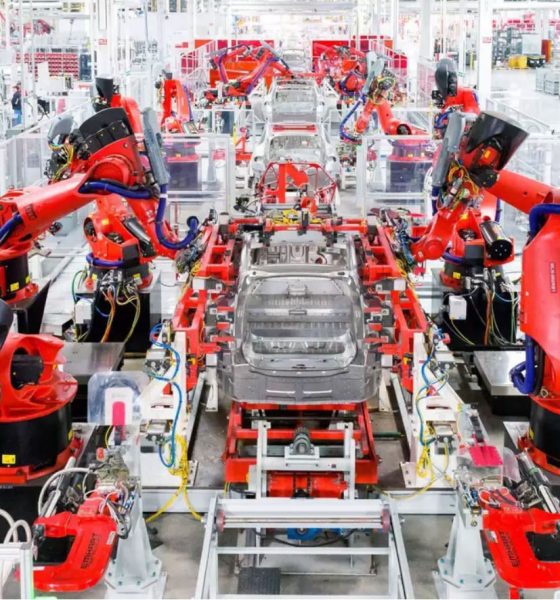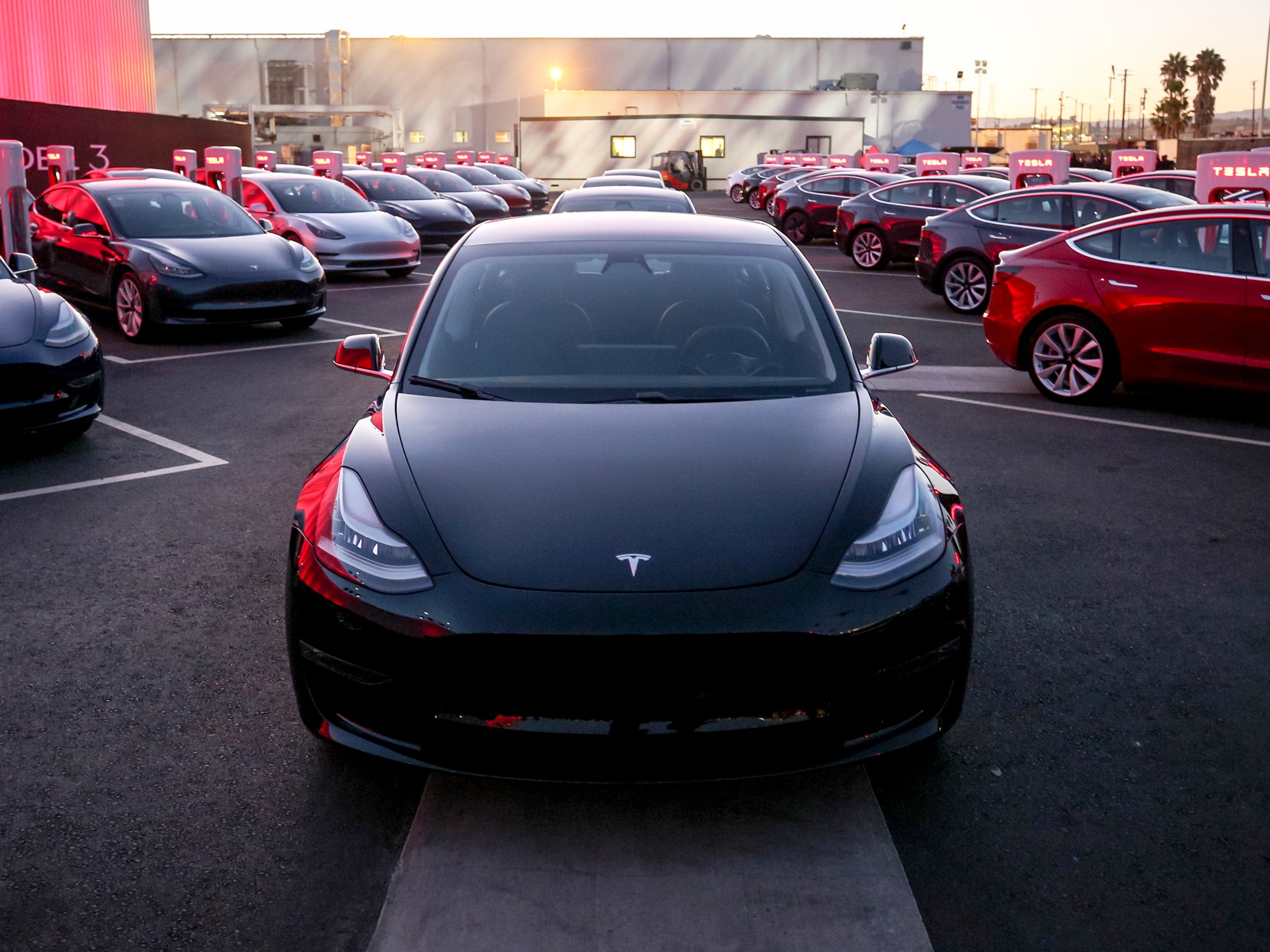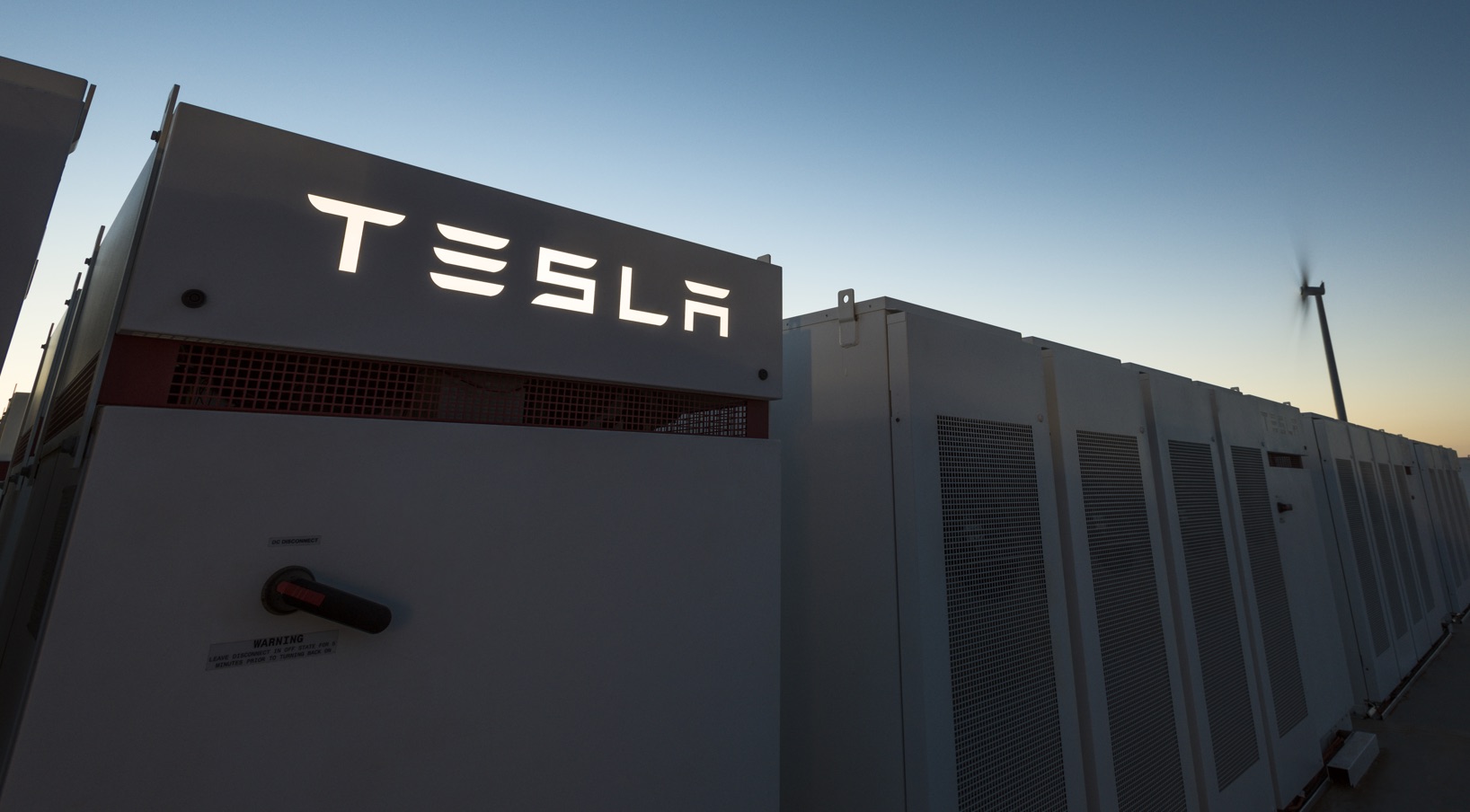

Investor's Corner
Tesla’s Q3 2018 earnings call: What we expect to see
In a rather surprising announcement on Monday, Tesla revealed that it was releasing its Q3 2018 earnings report after the closing bell on Wednesday. The earlier-than-expected earnings call appears to have fostered positive sentiments among the company’s investors, and coupled with a change of heart from a staunch TSLA short-seller, Tesla stock (NASDAQ:TSLA) saw a 12.72% rise on Tuesday, bringing the company within reach of the $300-per-share-mark once more.
While Tesla was able to hit its production and delivery targets in Q3, questions remain about whether the company was able to turn a profit as promised by CEO Elon Musk. That said, Wall Street analysts polled by FactSet expect Tesla to post revenue of $6.05 billion and a GAAP EPS of -$0.95, partly due to a major increase in Model 3 deliveries in the third quarter. Non-GAAP EPS consensus is a more favorable -$0.03.
With these in mind, here are some pertinent updates and information we are expecting to see in Tesla’s Q3 2018 earnings call.
Profitability and Cash-Flow Updates
Earlier this year, Elon Musk boldly declared that Tesla would be profitable and cash-flow positive in the second half of the year. The company went through great lengths in its efforts to achieve this ambitious target, from laying off 9% of its employees last June to allowing owners to help out the company deliver as many vehicles as possible in the final weeks of the third quarter.
Wall Street analysts polled by FactSet expect the company to report a modest amount of positive free cash flow for the third and fourth quarter. Non-GAAP EPS is also expected to improve to $0.78 in Q4. In the upcoming earnings call, Tesla would likely offer some updates on its profit outlook in its shareholder letter.

Model 3 Production and Margins
In Tesla’s Q2 shareholder letter, the company stated that it is aiming to grow Model 3 production to 10,000 units per week as soon as it can. Tesla also aimed to produce the Model 3 at a rate of 6,000 per week by late August — a goal that the company was unable to attain. In today’s earnings call, Tesla is expected to provide an updated guidance for the Model 3 ramp.
Back in August, Tesla noted that it expects Model 3 gross margins (GM) to improve to 15% and 20% in Q4. These figures are a bit more conservative than Tesla’s initial forecasts for the vehicle, which estimated gross margins to be at 25% when production is stabilized at 5,000 units per week. The upcoming earnings call should provide some guidance as to where the Model 3’s gross margins are at this point, and where it could be at the end of Q4.
The $35,000 base Model 3 and the Model Y
Tesla has pretty much hit its stride with the production of the Long Range RWD, Dual Motor AWD, and Dual Motor Performance Model 3. Earlier this month, the company also revealed the Mid Range RWD Model 3, a vehicle that places the electric car’s price closer to Elon Musk’s $35,000 starting price for the electric sedan. Considering that the company has left its self-imposed production hell, the time might be right for Tesla to provide some updated guidance as to when the long-promised $35,000 Model 3 would enter production.
Updates on other upcoming vehicles are also expected, particularly the next car in the company’s lineup — the Model Y. Considering that Elon Musk has teased an unveiling sometime early next year for the crossover SUV, there is a good chance that the upcoming Q3 2018 earnings call would provide a more concrete date for the highly-anticipated vehicle’s unveiling.

Tesla Energy Updates
Tesla Energy does not attract as many headlines as the company’s electric car business. Despite this, the company’s executives including CEO Elon Musk and CTO JB Straubel have both noted that Tesla’s energy storage business would likely match the company’s electric car division in the near future. This was highlighted recently by legendary investor Ron Baron, who stated that Tesla could become a $1 trillion company by 2030, comprised of a $500 billion electric car division and a $500 billion battery storage business.
Wall Street analysts’ consensus for Tesla Energy estimates the business to post revenue of $377 million (up 19%), and a gross profit of just $20 million. Announcements on upcoming battery storage projects are also expected to be discussed in the upcoming call.
Tesla’s New Chairman
As part of his settlement with the Securities and Exchange Commission, Elon Musk agreed to step down as Tesla’s Chairman. Reports eventually emerged that board member James Murdoch was in line to take on Musk’s role. These reports were eventually debunked by Elon Musk himself on Twitter, though, leaving Tesla’s next chairman still a large question mark.
On Wednesday’s earnings call, expectations are high that the company would provide some updates on its search for a new Chairman to replace Elon Musk. Other terms of the CEO’s settlement with the SEC, particularly the addition of two new independent board members, would likely be discussed as well.
Tesla’s Q3 Update letter would be posted on Tesla’s Investor Relations website after markets close today. At 3:30 pm Pacific Time (6:30 pm Eastern Time), Tesla would start its Q3 earnings call.

Investor's Corner
Tesla stock closes at all-time high on heels of Robotaxi progress

Tesla stock (NASDAQ: TSLA) closed at an all-time high on Tuesday, jumping over 3 percent during the day and finishing at $489.88.
The price beats the previous record close, which was $479.86.
Shares have had a crazy year, dipping more than 40 percent from the start of the year. The stock then started to recover once again around late April, when its price started to climb back up from the low $200 level.
This week, Tesla started to climb toward its highest levels ever, as it was revealed on Sunday that the company was testing driverless Robotaxis in Austin. The spike in value pushed the company’s valuation to $1.63 trillion.
Tesla Robotaxi goes driverless as Musk confirms Safety Monitor removal testing
It is the seventh-most valuable company on the market currently, trailing Nvidia, Apple, Alphabet (Google), Microsoft, Amazon, and Meta.
Shares closed up $14.57 today, up over 3 percent.
The stock has gone through a lot this year, as previously mentioned. Shares tumbled in Q1 due to CEO Elon Musk’s involvement with the Department of Government Efficiency (DOGE), which pulled his attention away from his companies and left a major overhang on their valuations.
However, things started to rebound halfway through the year, and as the government started to phase out the $7,500 tax credit, demand spiked as consumers tried to take advantage of it.
Q3 deliveries were the highest in company history, and Tesla responded to the loss of the tax credit with the launch of the Model 3 and Model Y Standard.
Additionally, analysts have announced high expectations this week for the company on Wall Street as Robotaxi continues to be the focus. With autonomy within Tesla’s sights, things are moving in the direction of Robotaxi being a major catalyst for growth on the Street in the coming year.
Elon Musk
Tesla needs to come through on this one Robotaxi metric, analyst says
“We think the key focus from here will be how fast Tesla can scale driverless operations (including if Tesla’s approach to software/hardware allows it to scale significantly faster than competitors, as the company has argued), and on profitability.”

Tesla needs to come through on this one Robotaxi metric, Mark Delaney of Goldman Sachs says.
Tesla is in the process of rolling out its Robotaxi platform to areas outside of Austin and the California Bay Area. It has plans to launch in five additional cities, including Houston, Dallas, Miami, Las Vegas, and Phoenix.
However, the company’s expansion is not what the focus needs to be, according to Delaney. It’s the speed of deployment.
The analyst said:
“We think the key focus from here will be how fast Tesla can scale driverless operations (including if Tesla’s approach to software/hardware allows it to scale significantly faster than competitors, as the company has argued), and on profitability.”
Profitability will come as the Robotaxi fleet expands. Making that money will be dependent on when Tesla can initiate rides in more areas, giving more customers access to the program.
There are some additional things that the company needs to make happen ahead of the major Robotaxi expansion, one of those things is launching driverless rides in Austin, the first city in which it launched the program.
This week, Tesla started testing driverless Robotaxi rides in Austin, as two different Model Y units were spotted with no occupants, a huge step in the company’s plans for the ride-sharing platform.
Tesla Robotaxi goes driverless as Musk confirms Safety Monitor removal testing
CEO Elon Musk has been hoping to remove Safety Monitors from Robotaxis in Austin for several months, first mentioning the plan to have them out by the end of 2025 in September. He confirmed on Sunday that Tesla had officially removed vehicle occupants and started testing truly unsupervised rides.
Although Safety Monitors in Austin have been sitting in the passenger’s seat, they have still had the ability to override things in case of an emergency. After all, the ultimate goal was safety and avoiding any accidents or injuries.
Goldman Sachs reiterated its ‘Neutral’ rating and its $400 price target. Delaney said, “Tesla is making progress with its autonomous technology,” and recent developments make it evident that this is true.
Investor's Corner
Tesla gets bold Robotaxi prediction from Wall Street firm
Last week, Andrew Percoco took over Tesla analysis for Morgan Stanley from Adam Jonas, who covered the stock for years. Percoco seems to be less optimistic and bullish on Tesla shares, while still being fair and balanced in his analysis.

Tesla (NASDAQ: TSLA) received a bold Robotaxi prediction from Morgan Stanley, which anticipates a dramatic increase in the size of the company’s autonomous ride-hailing suite in the coming years.
Last week, Andrew Percoco took over Tesla analysis for Morgan Stanley from Adam Jonas, who covered the stock for years. Percoco seems to be less optimistic and bullish on Tesla shares, while still being fair and balanced in his analysis.
Percoco dug into the Robotaxi fleet and its expansion in the coming years in his latest note, released on Tuesday. The firm expects Tesla to increase the Robotaxi fleet size to 1,000 vehicles in 2026. However, that’s small-scale compared to what they expect from Tesla in a decade.
Tesla expands Robotaxi app access once again, this time on a global scale
By 2035, Morgan Stanley believes there will be one million Robotaxis on the road across multiple cities, a major jump and a considerable fleet size. We assume this means the fleet of vehicles Tesla will operate internally, and not including passenger-owned vehicles that could be added through software updates.
He also listed three specific catalysts that investors should pay attention to, as these will represent the company being on track to achieve its Robotaxi dreams:
- Opening Robotaxi to the public without a Safety Monitor. Timing is unclear, but it appears that Tesla is getting closer by the day.
- Improvement in safety metrics without the Safety Monitor. Tesla’s ability to improve its safety metrics as it scales miles driven without the Safety Monitor is imperative as it looks to scale in new states and cities in 2026.
- Cybercab start of production, targeted for April 2026. Tesla’s Cybercab is a purpose-built vehicle (no steering wheel or pedals, only two seats) that is expected to be produced through its state-of-the-art unboxed manufacturing process, offering further cost reductions and thus accelerating adoption over time.
Robotaxi stands to be one of Tesla’s most significant revenue contributors, especially as the company plans to continue expanding its ride-hailing service across the world in the coming years.
Its current deployment strategy is controlled and conservative to avoid any drastic and potentially program-ruining incidents.
So far, the program, which is active in Austin and the California Bay Area, has been widely successful.








